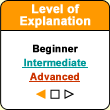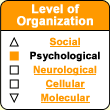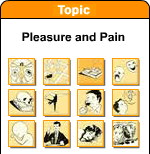|
|



Learning
How To Pique Curiosity
Pleasure is only one part of what we call happiness. Happiness appears to be a far more complex state, one that cannot be reduced solely to the activation of the dopaminergic pathways in the reward circuit. A second necessary condition for feeling happy is the absence of negative emotions, because as soon as we are experiencing fear, anguish, or sadness, pleasure vanishes.
Consequently, anything that reduces the activity of the amygdala, the brain structure associated with negative emotions, brings us closer to the state of happiness. Performing non-emotional mental tasks, for example, reduces the amygdala’s activity, thus providing a biological foundation for the widespread idea that keeping busy is the way to be happy.
But for someone to be happy, yet a third requirement must
be met. The ventral medial prefrontal cortex must be activated,
because it appears to provide the feeling that the world is
coherent and makes sense, which is also necessary for happiness.
Interestingly, in depressive people, the activity of this
region is diminished. |
|
|
| SEEKING PLEASURE AND AVOIDING PAIN |
|
The brain’s main function is to keep the body that houses
it alive and capable of reproducing. Say what you will about human
intelligence, before Mozart’s and Einstein’s brains
could let them produce their works of genius, they had to keep
their owners alive!
Hence it is no surprise that the systems in our brain that influence
our behaviour the most are the ones that let us meet our vital
needs - eating, drinking, reproducing, and protecting ourselves
from danger.
Three phases can be distinguished
in the operation of this powerful organ that maintains the equilibrium
of our body’s internal
environment.
First, in response to stimuli, the brain drives us to
take actions to satisfy our needs. For example, hunger
makes us eat when the glucose in our bloodstream drops below
a certain level. Sexual desire drives us to make love with available
partners. And loneliness makes us go out and meet other people,
to satisfy the more specifically human need to socialize.
 |
Second, our actions are rewarded by
sensations of pleasure. But it is important to
note that it is mainly the action itself that is rewarding,
not just the actual reward. For instance, receiving glucose
solution intravenously will get your blood sugar back up
to an appropriate level, but it will never give you as
much pleasure as sharing a good meal with friends. The
action, which often takes the form of a ritual, is therefore
at the very heart of the pleasure experienced.
In the third phase, the feeling of satisfaction
brings an end to the actions–until new signals
trigger new desires. The behaviours that are vital for
our survival are thus under the control of the desire/action/satisfaction
cycle which enables the organism to maintain its integrity.
|
However, such “approach” behaviours
are not always the best way of ensuring your survival. Fight
or flight can also save your life, depending on the situation.
| To feel happy, you not only need to
experience pleasure, you also have to be able to represent
it to yourself. You have to be able to say: “We drank
some wine. It was good. Do you remember? It was for your birthday!" |
|
|





